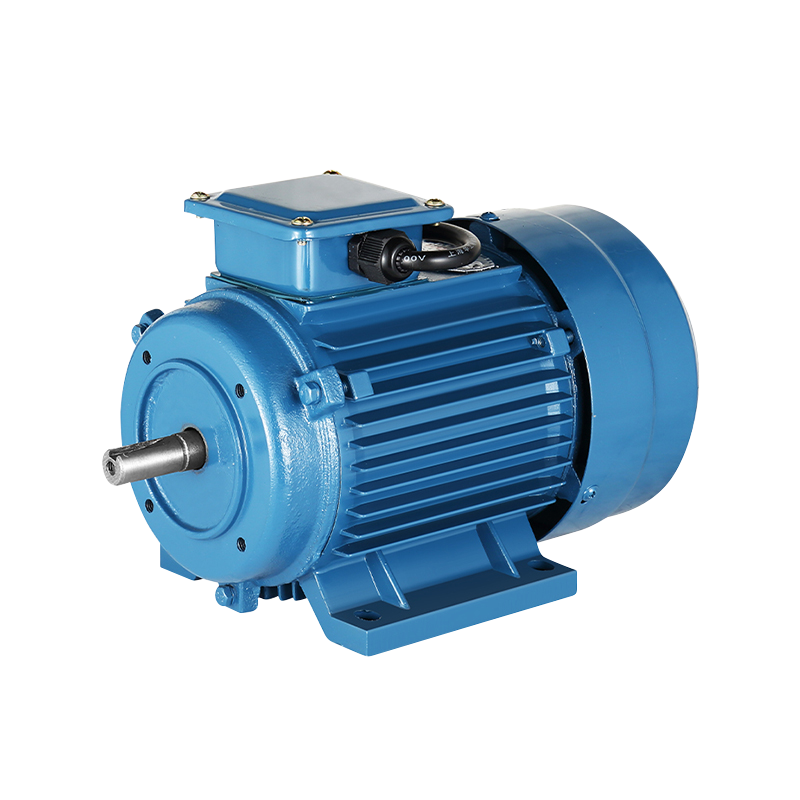Three-Phase Asynchronous Electric Motor: A New Era of Efficiency and Innovation
In the modern industrial landscape, the Three-Phase Asynchronous Electric Motor is emerging as a cornerstone of efficiency and reliability. Renowned for its robustness and operational stability, this motor technology is revolutionizing industries that rely on high-performance electric drives. The latest advancements in Three-Phase Asynchronous Electric Motors are setting new benchmarks in energy efficiency, durability, and cost-effectiveness.
The Three-Phase Asynchronous Electric Motor operates based on the principle of electromagnetic induction. Unlike synchronous motors, which require precise synchronization with the power supply frequency, the Three-Phase Asynchronous Electric Motor functions effectively without this synchronization. This design feature allows it to handle varying loads and conditions while maintaining a steady performance, making it ideal for industrial applications where reliability is crucial.
The core of the Three-Phase Asynchronous Electric Motor is its rotor, which rotates at a speed slightly less than the synchronous speed of the stator’s rotating magnetic field. This differential speed creates torque, which drives the motor. This construction ensures that the motor can handle heavy loads and demanding operational environments with minimal maintenance.
The versatility of the Three-Phase Asynchronous Electric Motor makes it a preferred choice in various sectors. In manufacturing, these motors are used to drive machinery such as pumps, compressors, and conveyors. Their ability to operate continuously under heavy loads makes them ideal for environments where durability and reliability are essential.
In the HVAC industry, the Three-Phase Asynchronous Electric Motor powers fans and blowers that manage air circulation and temperature control. The efficiency and consistent performance of these motors contribute to more effective climate control and energy savings in commercial and residential buildings.
The motor is also prominent in the automotive sector, where it drives various components such as power steering systems and electric drives. Its reliable operation under different load conditions is crucial for maintaining the performance and safety of modern vehicles.
One of the significant advantages of the Three-Phase Asynchronous Electric Motor is its energy efficiency. These motors are designed to minimize electrical losses and operate at high efficiencies, which translates to lower energy consumption and reduced utility bills. This efficiency is particularly beneficial in large-scale industrial operations where energy costs constitute a significant portion of overall expenses.
Operationally, the Three-Phase Asynchronous Electric Motor offers exceptional reliability and longevity. Its robust design allows it to withstand harsh operating conditions and continuous use, reducing the frequency of repairs and replacements. This durability contributes to lower maintenance costs and a higher return on investment for businesses.
The motor’s performance under varying load conditions without compromising efficiency is another key benefit. This capability ensures stable operation in environments with fluctuating demands, enhancing overall system reliability and productivity.
Recent advancements in Three-Phase Asynchronous Electric Motor technology have introduced several innovative features that enhance its performance and usability. Modern motors are equipped with advanced control systems that allow for precise adjustments in speed and torque. These controls enable users to optimize motor performance for specific applications, improving efficiency and effectiveness.
Some Three-Phase Asynchronous Electric Motors now include integrated smart technologies, such as sensors and communication interfaces. These innovations facilitate real-time monitoring and diagnostics, allowing for proactive maintenance and enhanced operational control.
Safety features are also a critical consideration in the design of these motors. Many models come with built-in protections against issues such as overloading, overheating, and electrical faults. These safety measures ensure reliable operation and minimize the risk of equipment failure.
The demand for Three-Phase Asynchronous Electric Motors is growing as industries seek more efficient and reliable electric drive solutions. The trend towards automation and energy efficiency is driving the adoption of these motors, which offer both performance and cost benefits.
-
Feedback

 English
English 中文简体
中文简体






